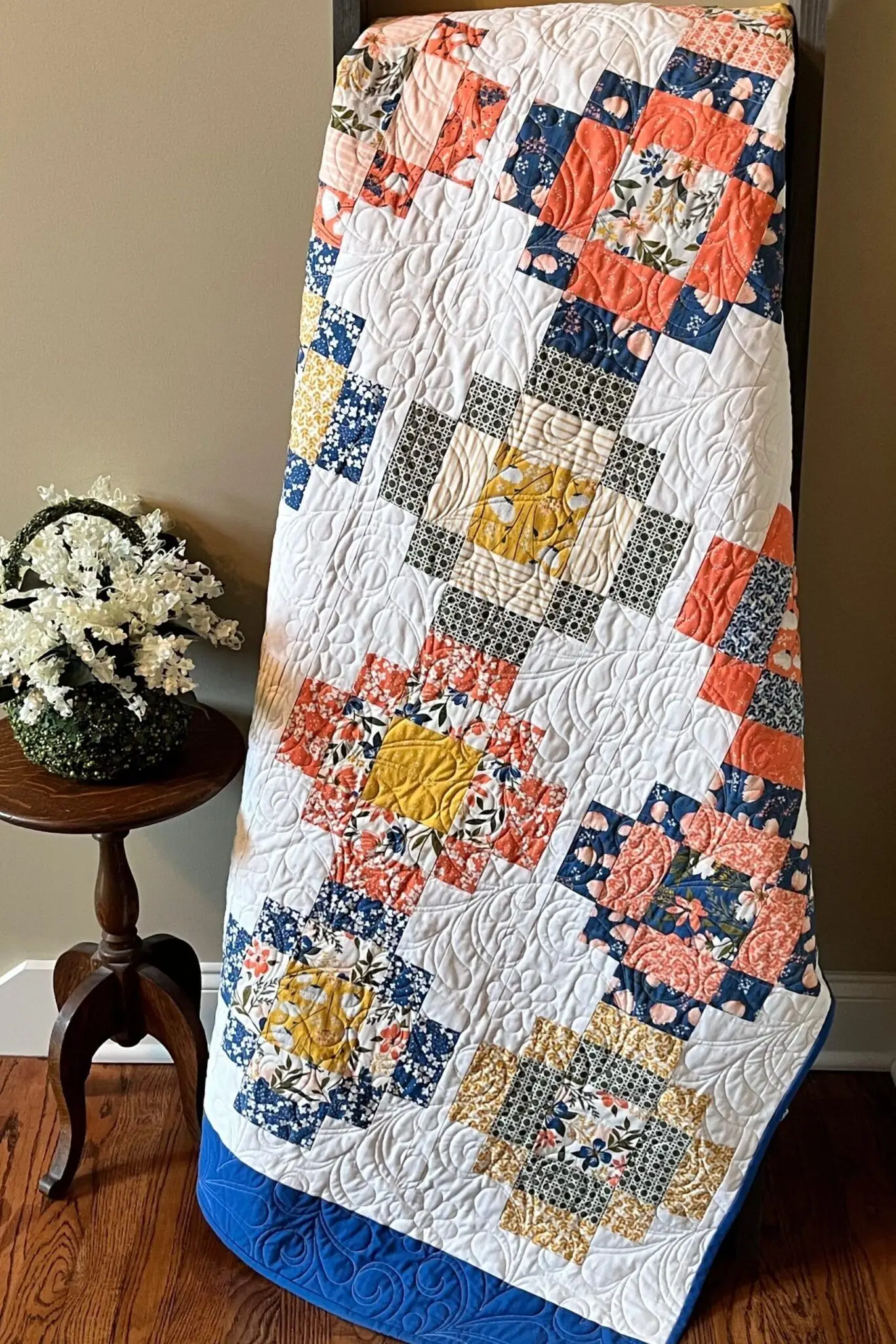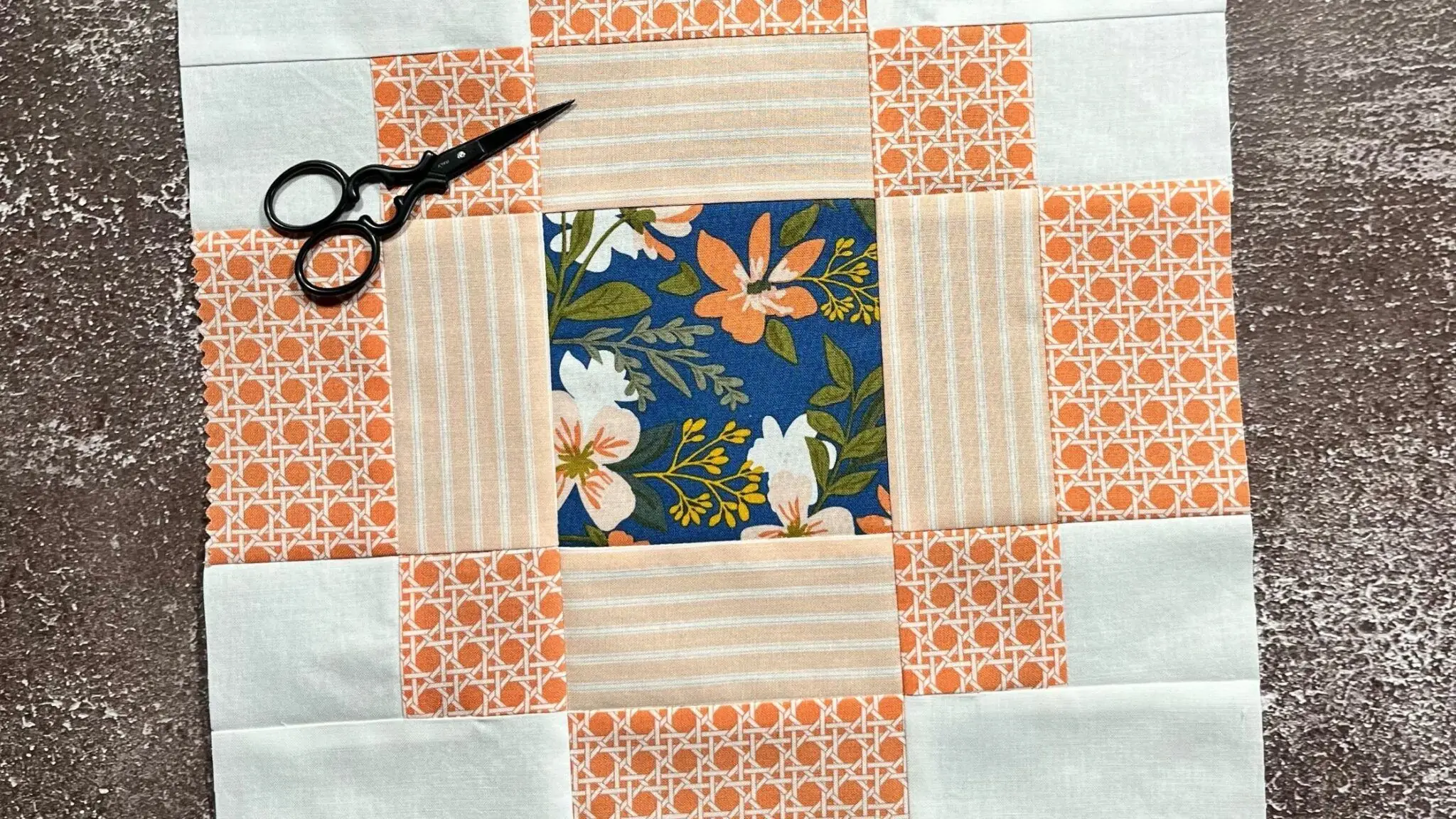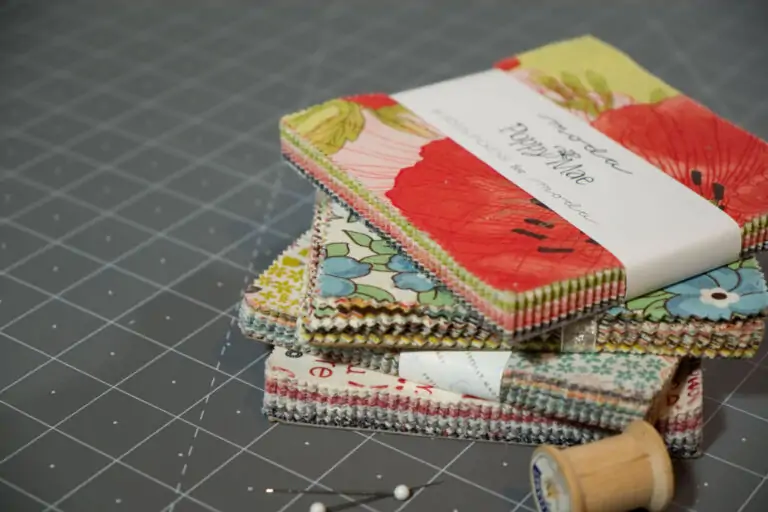The Antique Tile Quilt Block: From Vintage to Vibrant
- Tonganoxie Nine-Patch Quilt Block: Easy Vintage Re-make
- The Antique Tile Quilt Block: From Vintage to Vibrant
- The T Quartette Quilt Block: A Forgotten Favorite
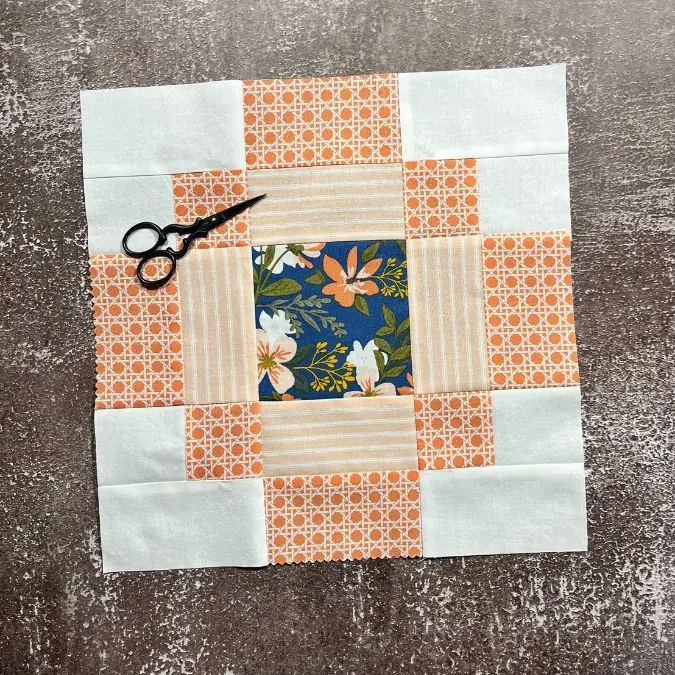
The Antique Tile quilt block—an understated beauty with a story rooted in early 20th-century America. Its clean, geometric layout was inspired by ceramic floor tiles found in homes, churches, and public buildings—hence the name ‘Antique Tile.’
Antique Tile Quilt Block – A Piece of history
This simple design first appeared Nancy Cabot’s daily quilt block column in the Chicago Tribune in 1938. Readers could send 5 cents to the Chicago Tribune and receive the block pattern and templates by mail. What they received might have looked much like the image below.
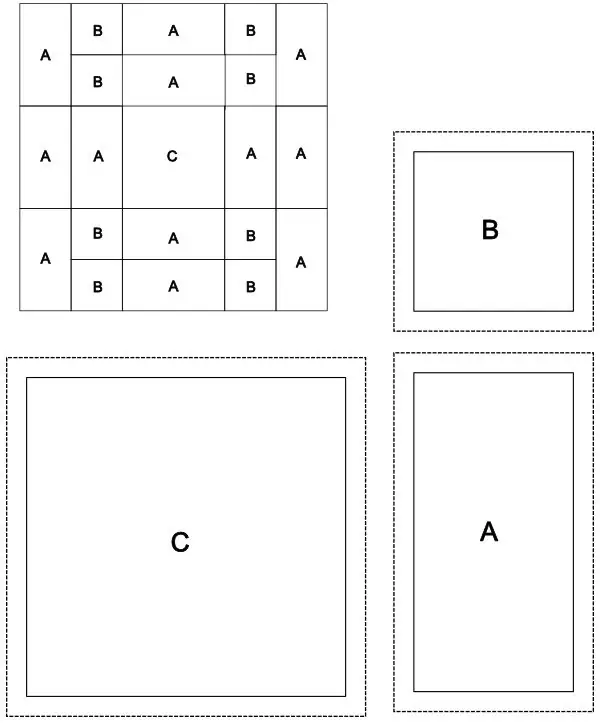
The quilter would then cut out the templates and trace the shapes to cardboard (such as a cereal box). These cardboard templates could then be traced to fabric multiple times, cut out and sewn together. Note that the seam allowance was included in the templates.
No doubt some quilters were savvy enough to use the idea for the layout and create their own templates for sewing this block or something similar, thus saving 5 cents.
stitching through hard times
During the 1930s, economic hardship touched nearly every family. With new fabric out of reach for many, women turned to what they had on hand—worn-out clothing, old curtains, and, of course, feedsacks.
No doubt the simple design of this block led to its popularity during the Great Depression, when quilters were using every fabric scrap they could find to make something useful—and beautiful.
This block is all about balance, simplicity, and thoughtful construction. It’s built on a three-by-three grid which makes it a Nine-Patch block. There are no angles or curves, just straight seams and a clever interplay of shapes and colors.
Who was Nancy Cabot?
Loretta Leitner Rising, pen name Nancy Cabot, wrote a newspaper column that appeared daily in the Chicago Tribune beginning in 1932. By 1938 her column was in syndication across the United States. A new quilt block pattern was featured daily.
Loretta Leitner Rising worked for the Chicago Tribune for over 30 years as both Needlework Editor and daily newspaper columnist. Hundreds of patterns appeared in her column over that period of time thereby helping helping spark the significant 1930s quilting revival .
What’s so Special About this block?
The beauty of the Antique Tile block is its versatility—it plays well with everything from scrappy prints to solids and looks great in any setting. Some possible layouts are shown below.
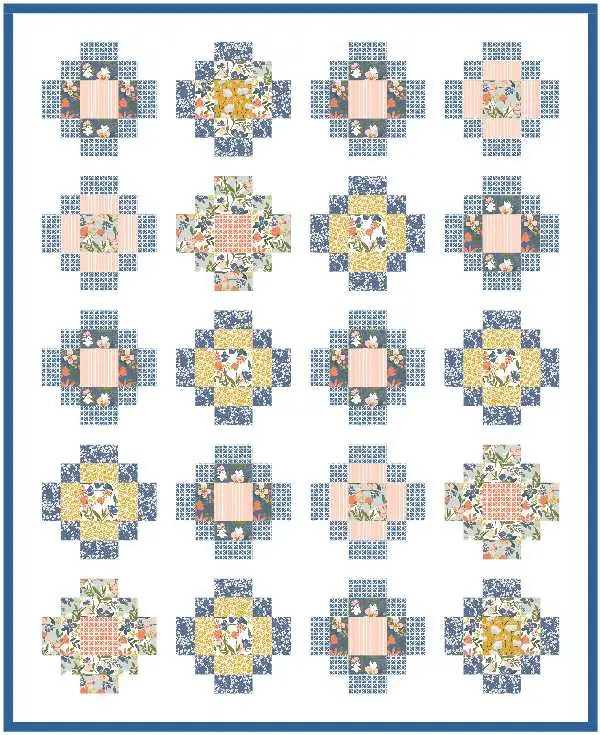

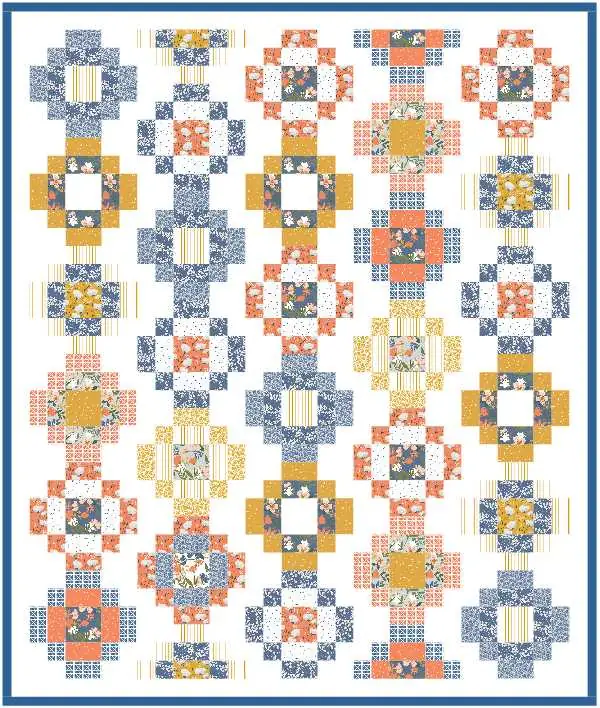
In addition, the possible color layouts in the block itself means you can make this simple pattern over and over again and always have a new look. Some possible variations are pictured below.
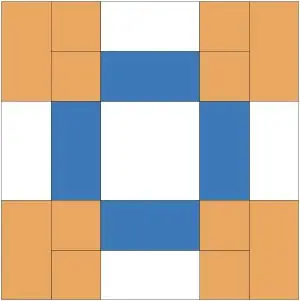
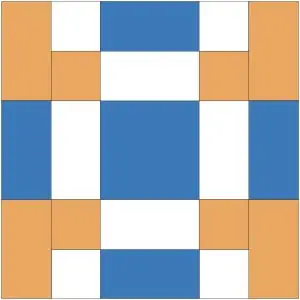
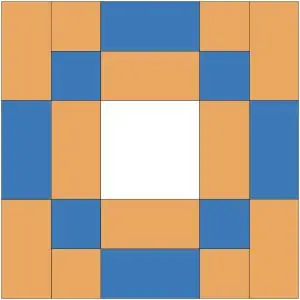
It’s a perfect example of how even the simplest blocks can hold rich visual and historical depth. The Antique Tile block still speaks to quilters who love structure, symmetry, and a connection to the past.
How to Make the Antique Tile Block
When I designed my pattern for the quilt pictured below, I wrote it specifically for a layer cake. However, if you follow the how-to instructions in this post, you will soon realize that scraps would also work in this block.
So, grab some scraps or a couple of 10-inch squares and a little background fabric and create something simple yet beautiful!
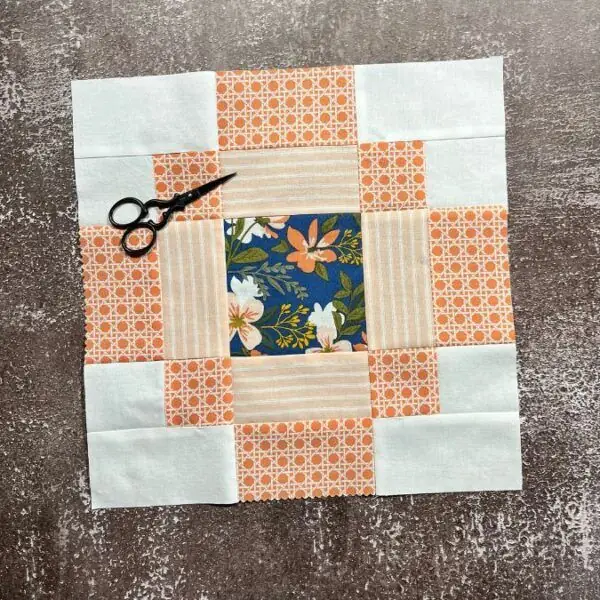
Cut Your Fabric
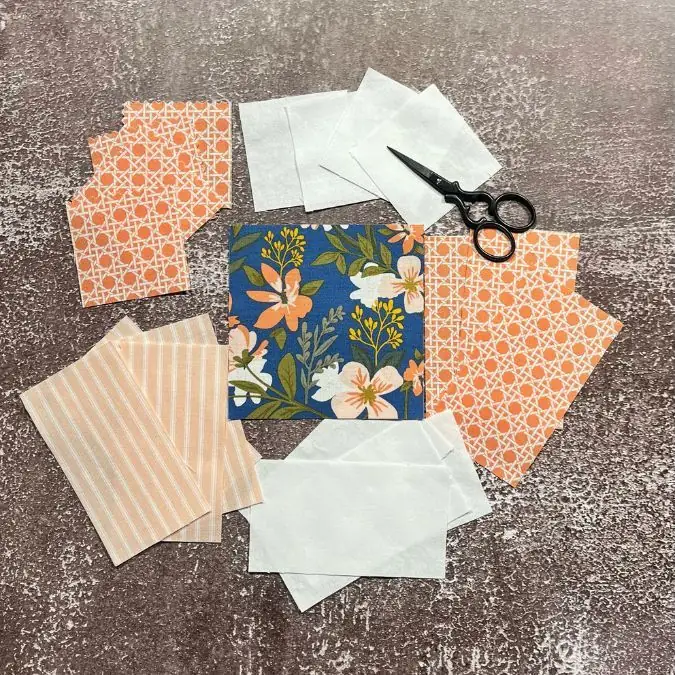
You will need:
[3] Layer Cake squares or scrap fabric
[1] 4½” x 4½ ” center square
[4] 2½” x 4½” inner rectangles
[4] 2½” x 4½” outer rectangles
[4] 2½” x 2½” outer squares
Background fabric
[4] 2½” x 4½” rectangles
[4] 2½” x 2½” squares
____________________________________________________________________________________
Arrange Fabric Pieces
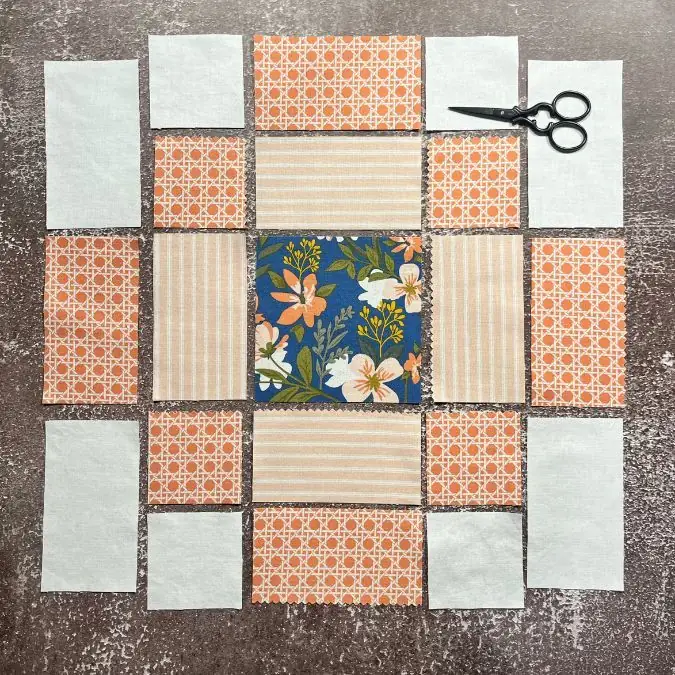
Lay out your fabric pieces as they will be sewn together to make the block.
___________________________________________________________________________________
Sew Fabric Pieces into Patches
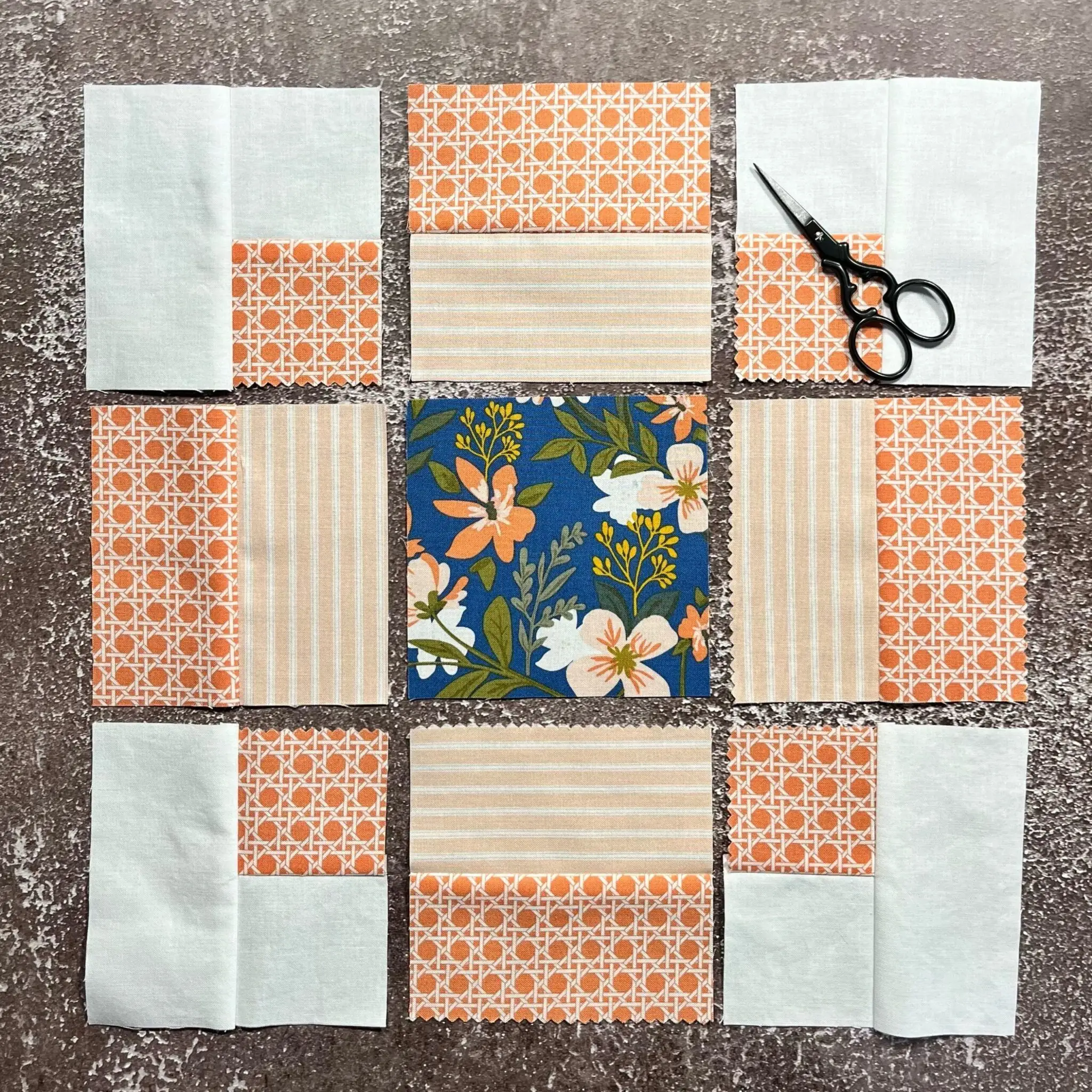
Remember, this is technically a Nine-Patch block. I found that my seams were easier to match and the block generally turned out more square when I sewed the fabric pieces together into 9 ‘patches’, and then sewed the patches together as you would a traditional Nine-Patch block.
__________________________________________________________________________________
Sew Patches Together to form Rows
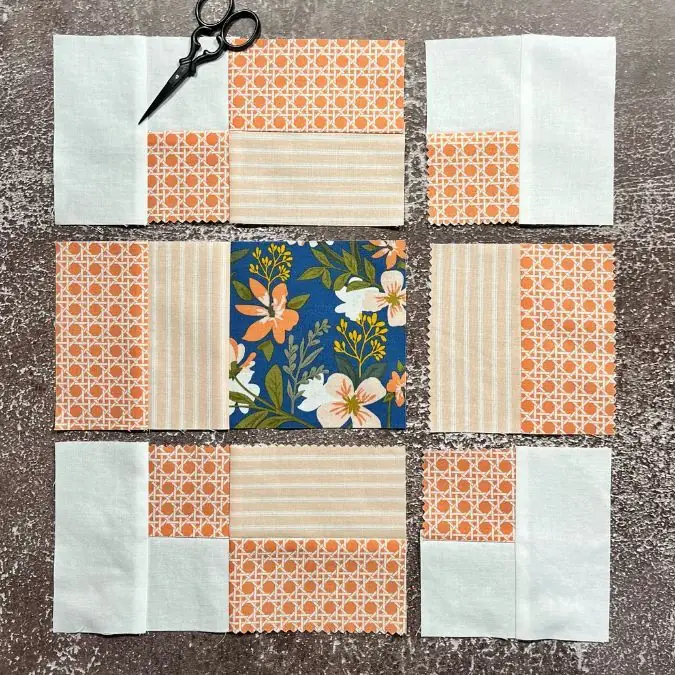
Once you have 9 ‘patches’, sew them together into rows nesting seams when possible.
__________________________________________________________________________________
Sew Rows together to Finish Block
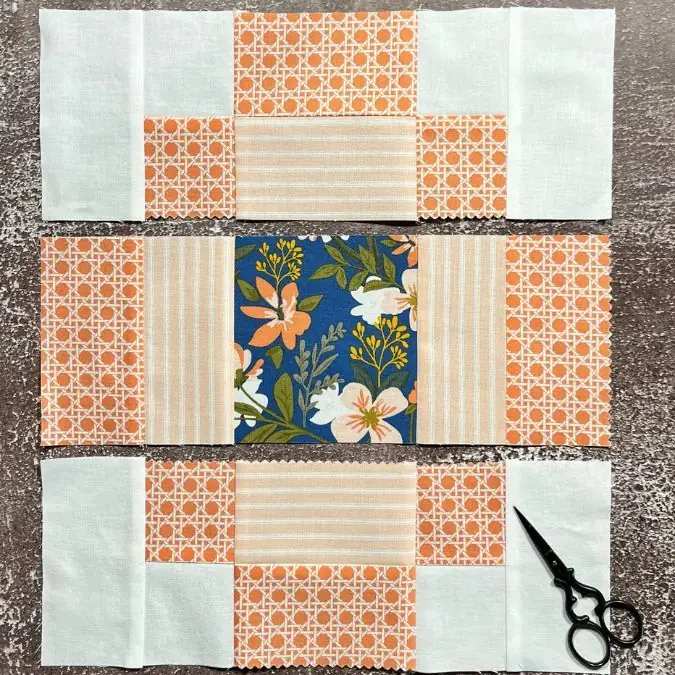
Now, sew the 3 block rows together nesting seams when possible.
_________________________________________________________________________________
The finished Block

Press block flat. It should measure approximately 12-1/2″ square. Don’t worry if it does not measure exactly 12 -1/2″ square, depending on your 1/4″ seam allowance it might be slightly larger or slightly smaller.
__________________________________________________________________________________
Get the Pattern
If you enjoyed making the Antique Tile block, you can purchase the quilt pattern below. There are so many layouts that showcase the Antique Tile that it was hard to choose, but I decided to keep the layout simple just like this amazing block.
My pattern is for a simple horizontal block layout that finishes at approximately 53″ x 80″. Both paper and PDF versions are available using the buttons below.
